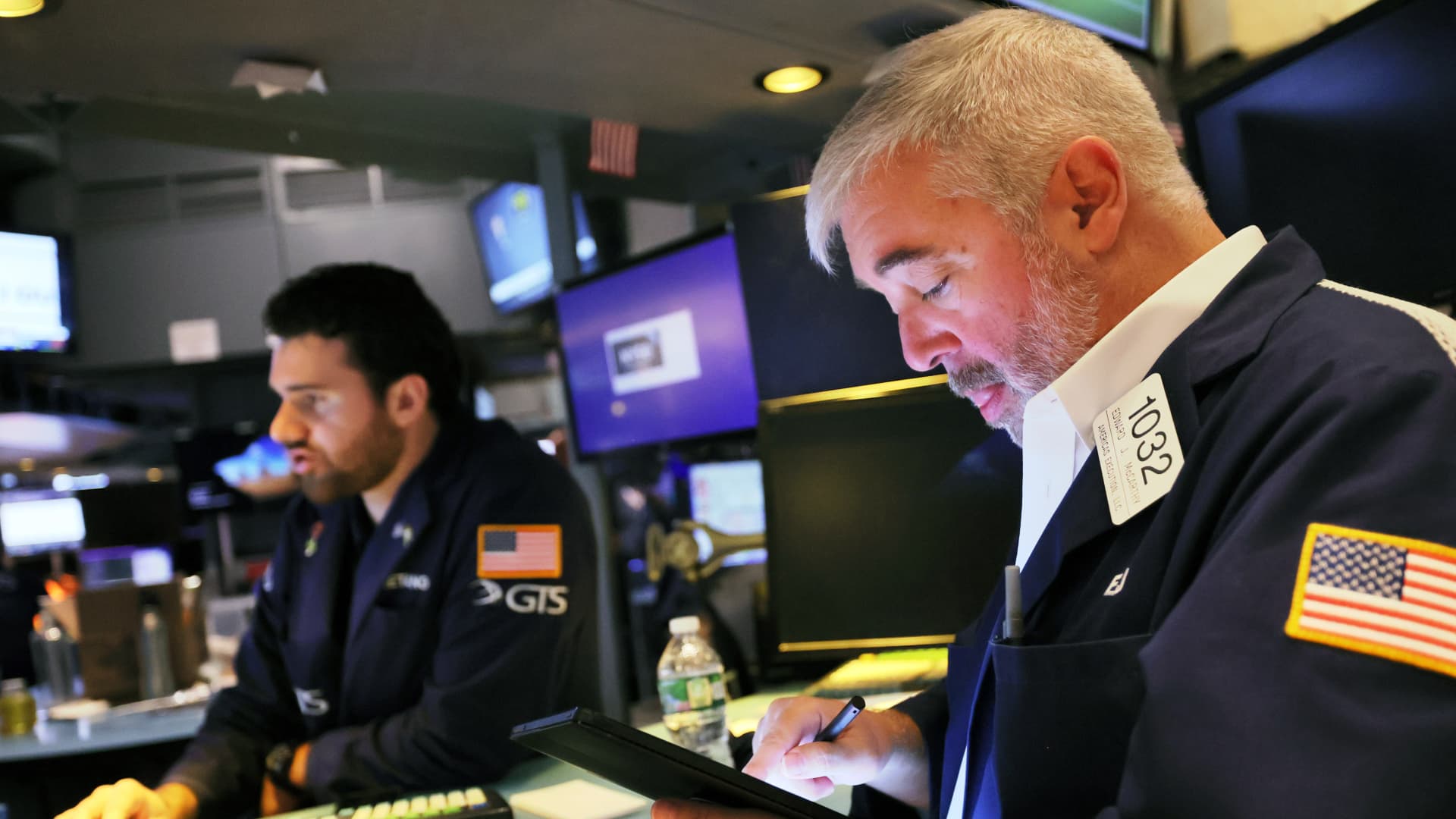Traders work on the floor of the New York Stock Exchange on August 16, 2023 in New York City.
Michael M. Santiago | Getty Images
This report is from today’s CNBC Daily Open, our new, international markets newsletter. CNBC Daily Open brings investors up to speed on everything they need to know, no matter where they are. Like what you see? You can subscribe here.
What you need to know today
The bottom line
Rising U.S. Treasury yields are straining stocks. Minutes of the Federal Reserve’s July meeting triggered the 10-year yield to rise more than 2 basis points to hit its highest level in almost a year. But at 4.282%, it’s still lower than the benchmark interest rate of 5.25% to 5.5%.
That’s not even taking into account the last rate hike that the Fed had projected for the year, which would take rates to a range of 5.5% to 5.75%. Investors had hoped — and bet — that the Fed would stop hiking after its meeting in July.
Those bets are slowly unwinding. There’s a 33.2% chance that the Fed will increase rates by 25 basis points at its November meeting, according to the CME FedWatch Tool. Those odds were only 27.8% a week ago.
And with rates possibly going higher than that if inflation resurges — as the Fed warned in its minutes — yields could climb further still.
Investors didn’t like the sound of that. The S&P 500 lost 0.77%, the Dow Jones Industrial Average fell 0.84% and the Nasdaq Composite declined 1.17%. All three indexes closed below their 50-day moving average — the first time for the Dow since June.
Trading was brisk, too, suggesting investors sold off stocks because they feared more losses. The SPDR S&P 500 ETF, a fund that tracks the S&P index, traded 95.3 million shares, above its 30-day moving volume of 72.4 million
Indeed, investor sentiment nosedived this week, according to the latest American Association of Individual Investor weekly survey. Just 35.9% of investors are bullish about the next six months, down from 44.7% last week and 49% two weeks ago. The decline snapped a 10-week streak when bullishness had exceeded the historical average of 37.5%, the AAII said.
It’d be a stretch of the imagination, however, to say that a bear market is back. All indexes are still above their 200-day moving average. The S&P is around 9.31% off its record high and has rallied about 14% this year. It’s important to keep in mind that August has historically been a slow, and bad month for stocks. But August is just one month.
— CNBC’s Scott Schnipper contributed to this report

